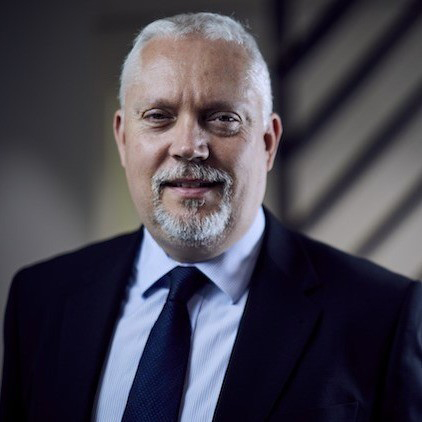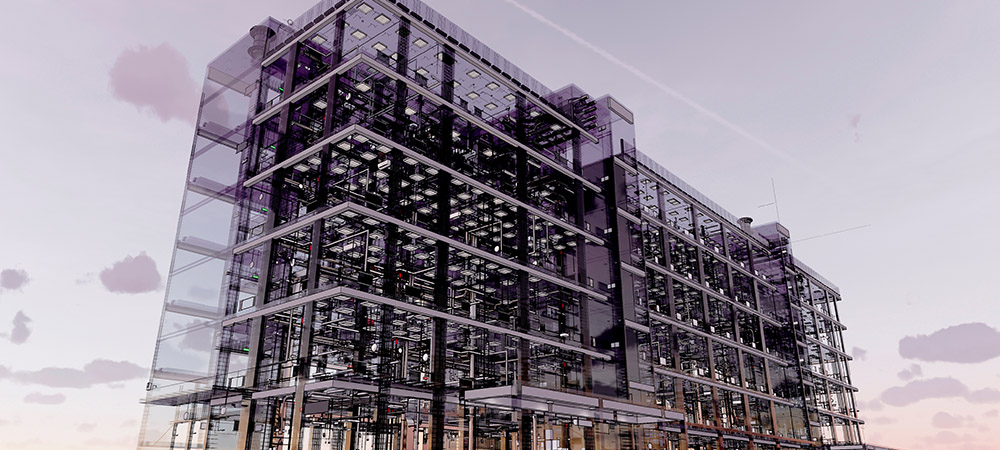Mark Norton, Digital Design Director at chapmanbdsp, reflects on the evolution of technology in planning and design over his 35-year career in the built environment sector. From the early adoption of Computer-Aided Design to the rise of Building Information Modelling (BIM) and Smart Building technologies, Norton shares insights into the transformative impact of digital advancements on efficiency, sustainability and innovation.

Having started my career as a mechanical building services apprentice, I’ve seen a good degree of evolution over the last 35 years in terms of the technologies that support planning and design in the built environment sector. And in today’s rapidly evolving digital landscape efficiency, sustainability and innovation are paramount as advanced solutions have become not just a preference but a necessary function.
But first, let’s rewind the clock to the mid-1980s when I was an early adopter of Computer Aided Design. In this way, I was embracing the digital agenda from its inception. Back then, computers were quite limited within construction and I was keen to get on board so that set the pathway for me. For the next twenty years, the evolution of available technologies was steady but then from the year 2000 there was significant growth in the way technology was used: things started to develop. You could say that the drawing board was pretty much dead by the end of the last century!
During the Noughties, there was a big push in some of the software development, which was quite interesting. By this point, there was definitely more mainstream adoption or should I say an acceptance of technology, certainly from a drawing perspective. Then with the advent of BIM, (Building Information Modelling) entering the sector in a significant way around 2012 and the next few years saw a government mandate in the years that followed, which had an impact on how this type of technology moved on again. At that point in my career, I went from being the only champion in the digital team to having a team of over 50 people. By then, clients had gone from dipping their toes into what was available, to harnessing the power of a digital model with data. We started having the ability to manipulate the data into different formats: into computer-aided facilities management systems (CAFM) and building management systems (BMS) and then there was the advent of Smart Buildings, where things are IP-addressed and linked intelligently, allowing the whole market of technologies to link and connect, not only from a data perspective but from an operational one as well.
Let’s look at another example, laser scanning for instance, that really came into its own around five years ago. It was relatively expensive at the start but as the cost of the equipment dropped over time, the technology became far more accessible. To give you an idea, a mid-range scanner can scan 600,000 points per second, it gives you lots of usable data that’s accurate. There are many elements that start to join the dots within construction that we didn’t have access to before. Another good example is some of the cameras available that can record and track the progress of a project with incredible accuracy. They capture what is seen on site, and then AI transposes that information into site progress reports. There’s no guesswork, it’s a factual accurate algorithm that determines the data output.
This is beneficial in two ways, firstly it helps to track project progress and build a data map, and after time, it starts to build a pattern, creating projections on where the installation will be in the weeks and months ahead. This data visibility and the calculations that follow create a transparent picture, an unequivocal truth. A clarity that we can offer ourselves and our clients.
Secondly, technology platforms have also made it easier for greater collaboration to develop the design, with the architect, structural engineer and interior designer, as well as the other specialist designers involved in the project. That said, because that information is more easily shared, there can be a trap of ‘a rolling design’, potentially more iterations than ever intended, a keen focus is required to keep the programme on track with key milestones observed.
Going back to Smart Buildings, the technology available is incredibly useful in the compliance and operation of buildings, how you design, construct, maintain and operate a building to maximum efficiency is now fundamental. Just as we’ve seen with low-emission cars, we’re looking at low-emission buildings, and the recycling of materials for those buildings as well. So in the future, do we go modular with certain types of buildings so we can literally unbolt and bolt new pieces on, perhaps schools, hospitals, prisons and housing, there could be far more widespread use of design for manufacture and assembly (DfMA).
Whenever there’s new technology there’s also the issue of training staff to use it correctly and the willingness of people to embrace new systems and ways of working. People’s adaptability to change can take us to many places that we’ve not been before.
I’m passionate about harnessing the power of technology to drive innovation and transform the built environment. By embracing the likes of BIM, simulation data-driven analysis and cloud collaboration, we’re redefining the way we plan, design, and construct buildings for a sustainable future.




